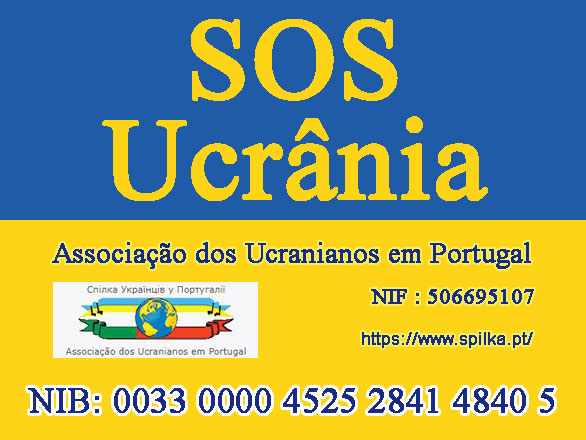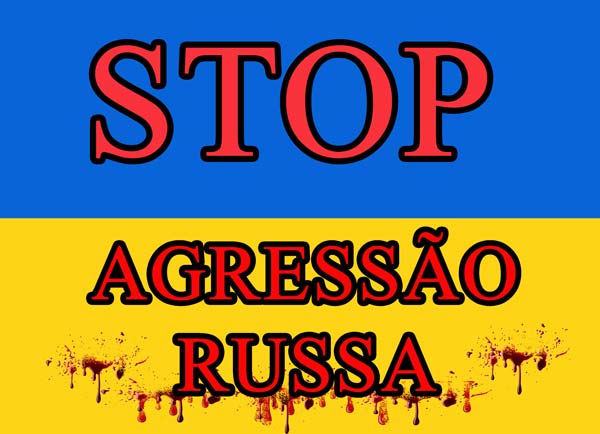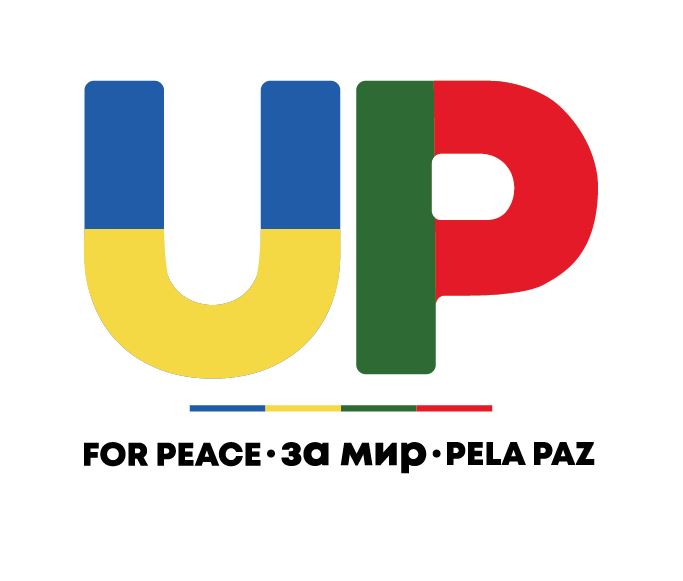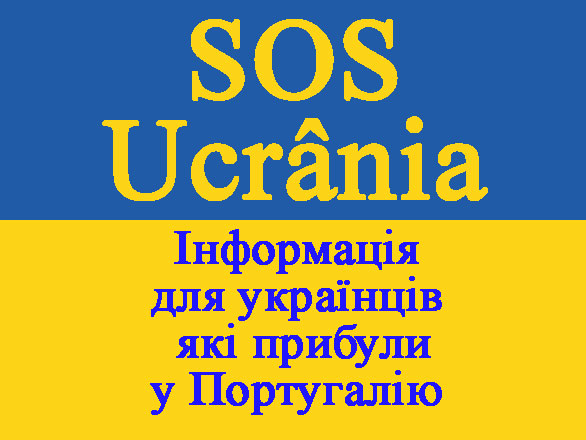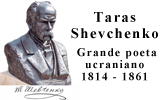- Закон України № 376-V про Голодомор 1932-33 рр.
- Офіційне визнання міжнародною спільнотою
- Суд над організаторами Голодомору-Геноциду
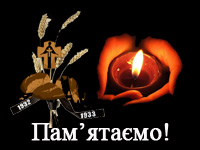 |
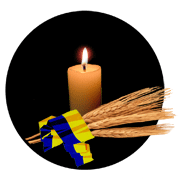 |
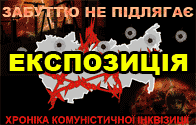 |
Статут Культурно-освітнього центру «Дивосвіт» при Спілці українців у Португалії
Увага!
- Українсько-португальська угода про соціальне забезпечення
- До уваги всіх, хто оновлює або отримує водійські посвідчення в Португалії
- У відпустку в Україну власним автотранспортом до 60 днів
- «Шлях Перемоги» - громадсько-політичний тижневик
Diagnoses of Death during the Holodomor of 1932–33 as a Source for Creating a Victim Database
“As long as Ukraine retains its national unity, as
long as its people continue to think of themselves as Ukrainians and to seek
independence, so long Ukraine poses a serious threat to the very heart of Sovietism.”
Raphael Lemkin[1]
The artificially-engineered famine, known as the Holodomor, is the focus of a large number of scholarly publications and media reports because for the first time in the history of modern Ukrainian statehood this topic has begun to attract the attention of both the Ukrainian public and the international community. A significant factor in this surge of interest in the Holodomor is the fact that Ukrainian society is continuing to come to grips with these tragic and instructive pages from the history of the Ukrainian nation. For millions of Ukrainians, research on the Holodomor- genocide continues to be a factor of self-identification.
It is important to note that some studies of the Holodomor do not cite any primary sources, above all, archival documents. While collections of directive documents and documented memoirs, which shed a general light on the genocide of the Ukrainian people, have already been published, it is to be expected that hardly any personal data exist on Ukrainians who starved to death, even though the creation of such information is constantly emphasized in nationwide and local Ukrainian research programs and commemorative measures.
This is precisely why, in the absence of a documentary base, there is no body of historical work on this topic. Some notable exceptions include Oleksa Kalynyk’s book What Does Communism Entail?[2] as well as a small number of publications that have appeared in recent years.[3] This is explained by the fact that until recently the records of all branches of the Civil Registry Office (RATsS; Rus. ZAGS) for 1932–33—the main documentary sources on this set of questions—were stored in sub-departments of Ukraine’s Ministry of Justice. Today they are part of the permanent holdings of oblast-based state archives. As of autumn 2007, 715 documents were transferred to the State Archive of Sumy Oblast (DASO). Keeping in mind that approximately one-third of them consist of documents recording the deaths of people during the Holodomor, in this article we will analyze diagnoses of death in 1932–33 and examine the prospects for compiling a database of victims of the genocide with the aid of data collected from several raions (districts) located in Sumy oblast.
Analyzing diagnoses of death allows Holodomor researchers not only to study quantitative features, but also affords them the opportunity to examine the problem from various angles. For example, if we look at 182 diagnoses studied thus far, we can see the scale on which the history of the Holodomor was being falsified when the genocide was already in full swing. The presence in a single registry volume of such causes of death as “unknown” and “from sickness”, which were issued for dozens and hundreds of victims, as well as the complete absence of cause of death demonstrate that the Soviet communist government was deliberately concealing the truth about the famine and that the Soviet leaders were fully aware of their criminal actions. Therefore, the attempts of contemporary apologists of Bolshevism to attribute the human losses to drought, “wrecking by kulak elements,” or the “hostile capitalist surroundings” are completely groundless.
CAPTION: This document features a typical bureaucratic error: the deceased’s nationality, Ukrainian, is also listed in the section entitled “Cause of Death.”[4] Statistical analysis reveals that civil registry clerks were not far off the mark.
Another group of diagnoses of death consists of medical terms that, in the view of archival specialists, must still be researched by medical personnel—for a number of reasons. First of all, it is crucial to identify diagnoses that were recorded during this period by both physicians and non-medical personnel in ink and pencil, calligraphic script, and incomprehensible abbreviations, as well as those that are completely indecipherable. A significant proportion of death certificates is comprised of documents with faded text; therefore their full digitization for the purpose of creating a collection of Holodomor documents is a timely project.[5] Next, it is necessary to select medical diagnoses of illnesses that ensued as a consequence of prolonged starvation, weakening of the human organism, food poisoning, and the like.
It is important to note that the above-mentioned causes of death are frequently present in documents. That said, one must also be aware of the pressure to which medical personnel were subjected in the 1930s. Thus, a significant number of deaths from starvation is “hidden” in various fabricated diagnoses. This means that the next step should be to compare the causes of death of concrete individuals in specific population centers, as cited in DASO documents, along with lists of those who died of starvation, which have been compiled by local working groups. Such data will reveal the scale of falsified diagnoses of death, and new names may be uncovered, which were never registered by the Civil Registry Office or are missing because the registration books did not survive.
The documents stored at DASO reveal that the most compelling diagnoses of death are those that indicate starvation as the cause of death. There are several groups of these diagnoses:
Diagnoses, including “due to starvation,” “starvation,” “starving, “emaciation due to starvation,” are most frequently encountered in Civil Registry Office records for Nedryhailiv,[6] Sumy,[7] Konotop,[8] Putyvl,[9] Bilopillia,[10] Romny,[11] Trostianets,[12] Krasnopillia,[13] and Hlukhiv raions.[14]
Diagnoses indicating the deaths of people from food insufficiency include “malnutrition,” “from loss of weight,” “weight loss,” “nutrition decline,” “disturbance of nutrition,” “because of depleted nutrition,” “from reduced sustenance,” “emaciation as a result of malnutrition,” “emaciation of the stomach,” “emaciation,” “inadequate sustenance,” “emaciation of the organism due to malnutrition.” Therefore, these causes of death due to starvation are most often encountered in the Civil Registry Office records for Sumy,[15] Shostka,[16] Nedryhailiv,[17] Seredyna-Buda,[18] Konotop,[19] Putyvl,[20] Bilopillia,[21] Lebedyn,[22] Lypova Dolyna,[23] Trostianets,[24] Okhtyrka,[25] and Krasnopillia raions.[26]
There is a group of varied diagnoses recording people’s deaths from extreme emaciation and exhaustion as a result of starvation: “from weakness,” “because of weight loss,” “emaciation,” “exhaustion of the organism,” “weakening of the organism,” “general exhaustion,” “depletion of energy.” Another frequently encountered diagnosis is “geriatric emaciation,” a term that in some cases was also applied to children. For example, in the village of Ulianivka, Bilopillia raion, this diagnosis was issued in connection with the death of an eight-year-old child. [27] It is precisely for these reasons that one must view such a diagnosis as a concealed form of death due to starvation. This group also includes the follow types of diagnoses: “cachetic weakness,” “because of emaciation,” “asthenia” [lack or loss of strength and energy; weakness—Trans.], “acute anemia,” and “general weakness,” as well as a large number of entries recorded in connection with them, such as “cardiac weakness,” “cardiac insufficiency,” “cardiac feebleness,” “decline in heart performance,” “termination of heart performance,” or “myocarditis [inflammation of heart muscle—Trans.] due to malnutrition and loss of energy,”[28] and others that indicate death due to emaciation as a result of starvation and difficult working conditions on collective farms. Such cases are illustrated by a death entry that reads “cessation of cardiac activity; death ensued suddenly during field work.”[29] The above-listed death entries are found in the record books of Civil Registry
Offices in the districts of Velyka Pysarivka,[30] Sumy,[31] Seredyna-Buda,[32] Hlukhiv,[33] Nedryhailiv, [34] Shostka,[35] Krolevets,[36] Putyvl,[37] Konotop,[38] Bilopillia,[39] Romny,[40] Lypova Dolyna,[41] Trostianets,[42] Okhtyrka,[43] as well as in the cities of Sumy[44] and Shostka.[45] Diagnoses indicating these causes of death but which also contain medical terms or at least reflect an attempt to apply such terminology appear in the record books for Krasnopillia[46] and Lebedyn[47] raions, for example: “biochem[ical] depletion,” “cachexia,” that is, when the body mass is 80 percent lower than normal. Thus, the diagnosis of “cachexia” comprises the majority of death entries recorded for the village of Slavhorod, Krasnopillia raion.[48]
A large group of death entries is comprised of those that indicate food poisoning or death resulting from the consumption of various kinds of poor-quality, surrogate food products or an increase in food consumption after protracted starvation. (There are countless examples of such cases in the literature on the Holodomor of 1932–1933.) They include, above all, the following diagnoses of death: “dysentery,” “nutrition disorder,” “digestive disorder,” “inflammation of the intestines,” “inflammation of the bowel,” “diphtheria,” “toxic diarrhea,” “bloody diarrhea,” “infectious diarrhea,” “due to emaciation resulting from diarrhea,” “incorrect nutrition,” “auto-intoxication,” “intestinal intoxication,” “gastrointestinal intoxication,” “volvulus” [bowel obstruction of a loop of bowel—Trans.], “bowel obstruction,” “gastrointestinal disorder,” “intestinal disorder,” “disorder of the alimentary canal,” “inflammation of the bowel,” “due to poisoning of the stomach and bowels,” “poisoning by green [i.e., unripe] fruits,” “rizachka” [stabbing pain in the abdomen—Trans.], “due to intestinal obstruction,” and “inflammation of the peritoneum.” There are also death entries that indicate two or more causes of death, for example: “digestive disorder and decline of nourishment.” The above-mentioned diagnoses are encountered most frequently in the record books of Civil Registry Offices in Lebedyn,[49] Krasnopillia,[50] Okhtyrka,[51] Trostianets,[52] Lypova Dolyna,[53] Romny,[54] Bilopillia,[55] Putyvl,[56] Konotop,[57] Hlukhiv,[58] Seredyna-Buda,[59] Krolevets,[60] Velyka Pysarivka,[61] Sumy,[62] Shostka,[63] and Nedryhailiv raions,[64] as well as in the cities of Sumy,[65] Shostka,[66]
and Konotop.[67] It must also be kept in mind that medical personnel, pressured by the authorities, more often indicated such causes of death instead of revealing their true nature.
The last large group of diagnoses of death as a result of starvation is comprised of death entries featuring medical terms. As mentioned earlier, even though there is still much work to be done on these documents, even now it is possible to single out those that unmistakably indicate the mass mortality of people who perished during the Holodomor. In these cases they are not connected as a rule with a person’s nutrition but, rather, are a result of extreme emaciation or external manifestations of death from starvation. The most distinctive ones are: “due to tuberculosis,” “tuberculosis,” “rickets,” and “dystrophy.” Some diagnoses have a dual nature, for example, “from starvation and lung inflammation,”[68] which leads to the supposition that a large number of deaths caused by starvation are concealed behind “ordinary” diagnoses. Finally, by far the largest and most shocking is a group of documents that contain notes about the following causes of death: “edema,” “skull edema,” “swollen legs,” “from edema,” “from starvation edema of the legs,” “protein deficiency swelling,” or “protein deficiency edema,” sometimes indicated by the Russian abbreviation BBO (bezbelkovyi nabriak). These terms appear most often in documents produced in Bilopillia,[69] Buryn,[70] Velyka Pysarivka,[71] Putyvl,[72] Konotop,[73] Hlukhiv,[74] Seredyna-Buda,[75] Krolevets,[76] Shostka,[77] Nedryhailiv,[78] Sumy,[79] Romny,[80] Lypova Dolyna,[81] Okhtyrka,[82] Krasnopillia,[83] and Lebedyn raions,[84] and the cities of Okhtyrka[85] and Sumy.[86]
With regard to research on diagnoses of death, their quantitative characteristics must also be considered. In this regard, much work lies ahead of Holodomor researchers. At present, it is only possible to arrive at individual estimates, but even they point to the immense scale and consequences of this deliberately organized murder of Ukrainians. For example, the Civil Registry Office’s record book for the village of Nedryhailiv contains the following figures for 1933: out of 574 death entries, 188 (33 percent), feature the diagnosis “due to starvation”; 167 death entries (30 percent), state “emaciation”; and 8 death entries (1.4 percent), state “because of malnutrition.” In other words, 64.4 percent of the death entries directly attest to the destruction of Nedryhailiv’s population by starvation. The column pertaining to the nationality of each victim contains the word “Ukrainian,” and all but two were peasants by occupation.[87]
The research completed by the archivists at the State Archive of Sumy Oblast on the number of deaths recorded in the city of Sumy in 1932 has yielded impressive results. Among other things, it reveals that Ukrainians comprised 94.8 percent of all victims. (See Table):
Estimate based on the Civil Registry Office (RATsS) books for the city of Sumy[88]
According to the figures cited in the Dovidnyk Sums′koï okruhy (Sumy, 1929), a compendium of statistics on Sumy okruha (district), four years earlier, in 1928, Ukrainians comprised 80.65 percent of the city’s population.
Even a superficial examination of civil registration records from other raions reveals similar horrifying facts. For example, the 1933 the registration book for the villages of Kaliivka, Krupets, Lushnyky, Makivka, Myronivka, Obrazhiivka, Pohrebky, and Svirzh (Shostka raion) reveals that approximately 50 percent of all the death entries state “cause unknown,” while the other half are missing a doctor’s diagnosis.[89] The diagnosis “unknown” also appears in death entries recorded for several villages in Bilopillia raion: 176 death entries for Bobryk (practically the entire book)[90]; Verkhosulka—192 death entries (the entire book)[91]; Novi Vyrky—181 death entries (the entire book)[92]; and Tuchne—217 death entries (the entire book).[93] In the village of Ulianivka, located in today’s Bilopillia raion, not a single one of the 161 death entries recorded in 1933 indicates a cause of death. Moreover, analysis of the surnames and dates corroborates numerous genocide eyewitness accounts about the fact that entire families were dying.[94] The same diagnosis is present in nearly all the record books for the following villages in Lypova Dolyna raion: Rusanivka—a total of 205 death entries[95]; Yahanivka, 481; Luchka, 484; and Rybalske, 135.[96] According to vital statistics data on the village of Horobivka, Bilopillia raion, most of the 224 death entries recorded in 1933 contain the diagnoses “malnutrition” or “unknown.”[97] That same year, in another part of this district, the deaths of half of the 161 people who died in the villages of Shkurativka and Nahirnivka were also caused by “malnutrition.” [98] A large number of people who starved to death is revealed when death certificates recording edema as the cause of death are analyzed. In the last year much has been written about the tragedy that befell the village of Pisky, Buryn raion, where 1,195 people died during the first eight months of 1933: in more than 85 percent of these cases the diagnosis was “protein deficiency edema.”[99] A similar situation existed in other populated areas of today’s Sumy oblast. In Konotop, for example, the death entries issued for one-third of the 133 people who died in 1933 recorded diagnoses of “emaciation” or “cardiac weakness.”[100] In the village of Bochechky, Konotop raion, of the 236 mortalities recorded in 1933, nearly half were diagnosed as “stomach inflammation” and “edema.”[101] The diagnosis of “protein deficiency edema” is frequently encountered in the Civil Registry Office record books for the villages of Suprunivka and Bilykivka, both in in Bilopillia raion (evident in nearly all 250 entries).[102] Nearly seventy death entries for the villages of Serhiivka and Mykolaivka-Ternivska record the diagnosis of “protein deficiency edema,”[103] and 104 entries for the village of Hlushets.[104] In the city of Lebedyn 135 people, whose surnames were listed as “unknown,” died of “protein deficiency edema” during the period 13–30 July 1933 alone.[105] It is entirely possible that these victims were people who had arrived from other areas in search of food.
The Soviet authorities’ attitude to the issue of recording deaths due to starvation during the Holodomor of 1932–33 merits special attention. At times, it suffices to glance at some sporadic attempts to break through the wall of silence and recount at least some of the truth about the horrific tragedy that was unfolding in Ukraine at the very time that the Soviet leaders were issuing optimistic reports about the accelerated pace of the state grain procurements. Accounts about the deaths of these hard-working people, who lived on the most fertile soil in the world, are like a mirror that also reflects the human tragedy of the perpetrators.
There are also many shocking diagnoses of death of people who perished at the hands of their loved ones, driven insane by starvation: these include “cut into pieces with an ax” (five cases in the village of Chervone, Sumy raion,[106]), “stabbed to death by the mother” (the female victim was two years old) in the village of Pidlypne, Konotop raion,[107] and “axed to death by the brother.”[108] These causes of death are part of the general picture of the genocide, the truth of which was suppressed for decades. Fearing repression or acting on direct orders, registrars at Civil Registry Offices began recording the following causes of death: “normal [i.e., natural] death,”[109] “[she] lived out her life” (the woman was 55 years old),[110] “as a result of poor maintenance” (77 death entries),[111] or the utterly cynical death entry “naturally worn out.”[112] Among the causes of death recorded in 1932 for the village of Pishchane, Sumy raion, we see such death entries as “[he] was sick for a long time” and “[she] was sick and old.”[113] Such death entries can hardly be considered a sign of the Soviet state’s “paternal care” for its citizens.
Thus, the record books of Civil Registry Offices contain a wealth of information about Ukrainian citizens who perished during the Holodomor of 1932–33. They are becoming the fundamental documentary base on which nationwide and regional lists of victims will be created for a long time to come. Of course, we will never be able to establish the true number of famine victims because the pervasive fear of repression led to the circumstance that far from all deaths were registered. Moreover, diagnoses of death do not fully reflect the scale of this horrific human tragedy.
The search for victims is also complicated by the absence of vital statistics books in many populated areas (they were destroyed or spirited away by the Soviet government), as well as by the dwindling number of living eyewitnesses of the Holodomor. This problem can be partially remedied by a comparative analysis of the number of victims listed in civil registration books for the years 1930–34, which reveal mortality dynamics in individual populated areas. For example, the table below shows that in the city of Sumy 863 people died in 1930; 1,018 in 1931; 1,314 in 1932; and 3,908 in 1933.
The study of vital statistics data books for 1934, the first year after the end of the Ukrainian famine-genocide, offers another distinct advantage for Holodomor research, as the attention of both scholars and members of the public will inevitably be focused on people who perished that year as a result of the abnormal living conditions that the Soviet communist leaders engineered in 1933.
It is already becoming clear that the mortality rate in Ukraine’s rural areas during the period of the Holodomor surpasses the losses sustained during the Second World War. The life of every human being is unique, and death is everywhere a tragedy, regardless of the causes. Therefore, despite all objective and subjective difficulties, researchers should do everything within their power to preserve the memory of every victim of the Soviets’ undeclared war against the Ukrainian nation.
In the fall of 2013 the entire electronic database of the 1932–1933 death registry books for Sumy oblast will be posted on two Internet web sites: the Electronic Archive of the Liberation movement, located at www.avr.org.ua, and the Sumy Historical Portal, located at www.history.sumynews.com. It is hoped that this research data will help significantly expand the circle of historians who are studying the Ukrainian genocide. For the descendants of Holodomor victims, these resources will provide a way to search for information about their dead relatives and restore their memory.
Hennadiy Ivanushchenko
Translated from the Ukrainian by Marta D. Olynyk
Do not cite, publish or distribute without the author’s permission.
[1] See Lemkin’s essay, “Soviet Genocide in the Ukraine”, published in 1953. The full text is posted online here: http://www.uccla.ca/SOVIET_GENOCIDE_IN_THE_UKRAINE.pdf. For a Ukrainian translation, see Rafael′ Lemkin, Riadians′kyi henotsyd v Ukraïni (Kyiv: Maisternia knyhy, 2009) (this quotation on pp. 31–32).
[2] Oleksa Kalynyk, Shcho nese z soboiu komunizm? Dokumenty pro rosiis′ko-komunistychnyi teror v Ukraïni (Munich; Toronto, 1953).
[3] See, e.g., Holodomory v Ukraïni: Odes′ka oblast′ (1921–1923, 1932–1933, 1946–1947), doslidzhennia, spohady, dokumenty (Odesa: Astroprynt, 2007).
[4] DASO, fond R 7720, op. 1, spr. 458, fol. 34
[5] To date, the following materials have been digitized: 266 record books of the Civil Registry Office (RATsS) and 56,510 death entries from every district in Sumy oblast, except Yampil, whose record books were not sent to DASO for safekeeping.
[6] DASO, fond R 7720, op. 10.
[7] DASO, fond R 7720, op. 15.
[8] DASO, fond R 7720, op. 5, 21.
[9] DASO, fond R 7720, op. 12.
[10] DASO, fond R 7720, op. 1.
[11] DASO, fond R 7720, op. 13.
[12] DASO, fond R 7720, op. 16.
[13] DASO, fond R 7720, op. 6.
[14] DASO, fond R 7720, op. 4, 20.
[15] DASO, fond R 7720, op. 15.
[16] DASO, fond R 7720, op. 17.
[17] DASO, fond R 7720, op. 10.
[18] DASO, fond R 7720, op. 14.
[19] DASO, fond R 7720, op. 5, 21.
[20] DASO, fond R 7720, op. 12.
[21] DASO, fond R 7720, op. 1.
[22] DASO, fond R 7720, op. 8.
[23] DASO, fond R 7720, op. 9.
[24] DASO, fond R 7720, op. 16.
[25] DASO, fond R 7720, op. 11.
[26] DASO, fond R 7720, op. 6.
[27] DASO, fond R 7720, op. 1, spr. 422, ark. 64.
[28] DASO, fond R 7720, op. 8, spr. 292, fols. 71–73, 76, 80.
[29] DASO, fond R 7720, op. 4, spr. 77, fol. 38.
[30] DASO, fond R 7720, op. 3.
[31] DASO, fond R 7720, op. 15.
[32] DASO, fond R 7720, op. 14.
[33] DASO, fond R 7720, op. 4, 20.
[34] DASO, fond R 7720, op. 10.
[35] DASO, fond R 7720, op. 17.
[36] DASO, fond R 7720, op. 7.
[37] DASO, fond R 7720, op. 12.
[38] DASO, fond R 7720, op. 5, 21.
[39] DASO, fond R 7720, op. 1.
[40] DASO, fond R 7720, op. 13.
[41] DASO, fond R 7720, op. 9.
[42] DASO, fond R 7720, op. 16.
[43] DASO, fond R 7720, op. 11.
[44] DASO, fond R 7720, op. 24.
[45] DASO, fond R 7720, op. 26.
[46] DASO, fond R 7720, op. 6.
[47] DASO, fond R 7720, op. 8.
[48] DASO, fond R 7720, op. 6, spr. 338.
[49] DASO, fond R 7720, op. 8.
[50] DASO, fond R 7720, op. 6.
[51] DASO, fond R 7720, op. 11.
[52] DASO, fond R 7720, op. 16.
[53] DASO, fond R 7720, op. 9.
[54] DASO, fond R 7720, op. 13.
[55] DASO, fond R 7720, op. 1.
[56] DASO, fond R 7720, op. 12.
[57] DASO, fond R 7720, op. 5, 21.
[58] DASO, fond R 7720, op. 4, 20.
[59] DASO, fond R 7720, op. 14.
[60] DASO, fond R 7720, op. 7.
[61] DASO, fond R 7720, op. 3.
[62] DASO, fond R 7720, op. 15.
[63] DASO, fond R 7720, op. 17.
[64] DASO, fond R 7720, op. 10.
[65] DASO, fond R 7720, op. 24.
[66] DASO, fond R 7720, op. 26.
[67] DASO, fond R 7720, op. 21.
[68] DASO, fond R 7720, op. 11, spr. 255.
[69] DASO, fond R 7720, op. 1.
[70] DASO, fond R 7720, op. 2.
[71] DASO, fond R 7720, op. 3.
[72] DASO, fond R 7720, op. 12.
[73] DASO, fond R 7720, op. 5, 21.
[74] DASO, fond R 7720, op. 4, 20.
[75] DASO, fond R 7720, op. 14.
[76] DASO, fond R 7720, op. 7.
[77] DASO, fond R 7720, op. 17.
[78] DASO, fond R 7720, op. 10.
[79] DASO, fond R 7720, op. 15.
[80] DASO, fond R 7720, op. 13.
[81] DASO, fond R 7720, op. 9.
[82] DASO, fond R 7720, op. 11.
[83] DASO, fond R 7720, op. 6.
[84] DASO, fond R 7720, op. 8.
[85] DASO, fond R 7720, op. 23.
[86] DASO, fond R 7720, op. 24.
[87] DASO, fond R 7720, op. 10, spr. 261.
[88] DASO, fond R 7720, op. 24, spr. 159–64, 180–96.
[89] DASO, fond R 7720, op. 17, spr. 190.
[90] DASO, fond R 7720, op. 1, spr. 435.
[91] DASO, fond R 7720, op. 1, spr. 439.
[92] DASO, fond R 7720, op. 1, spr. 451.
[93] DASO, fond R 7720, op. 1, spr. 458.
[94] DASO, fond R 7720, op. 1, spr. 462.
[95] DASO, fond R 7720, op. 9, spr. 132.
[96] DASO, fond R 7720, op. 9, spr. 124, 125, 126, 127, 131, 271.
[97] DASO, fond R 7720, op. 1, spr. 445.
[98] DASO, fond R 7720, op. 1, spr. 463.
[99] A. Fedoryna, Try knyhy 1933 roku, located at: http://www.pravda.com.ua www.umoloda.kiev.ua/
[100] DASO, fond R 7720, op. 21, spr. 129.
[101] DASO, fond R 7720, op. 5, spr. 330.
[102] DASO, fond R 7720, op. 1, spr. 454.
[103] DASO, fond R 7720, op. 1, spr. 453.
[104] DASO, fond R 7720, op. 1, spr. 464.
[105] DASO, fond R 7720, op. 22, spr. 66, fols. 35–105.
[106] DASO, fond R 7720, op. 15, spr. 397, fols. 14–18.
[107] DASO, fond R 7720, op. 21, spr. 115, fol. 79.
[108] DASO, fond R 7720, op. 11, spr. 265, fol. 145.
[109] DASO, fond R 7720, op. 16, spr. 278, fol. 114.
[110] DASO, fond R 7720, op. 10, spr. 255, fol. 29.
[111] DASO, fond R 7720, op. 11, spr. 265, fols. 124–42, 144–50, 152–54, 157–74, 176–77, 180, 182–85.
[112] DASO, fond R 7720, op. 7, spr. 71, fols. 82, 91.
[113] DASO, fond R 7720, op24, spr. 161.
{module mod_knopka_comments}
O seu apoio é importante, independentemente do valor que está disponível a doar
Громадське незалежне
Відеоархів Спілки: |
- Перегляди статей
- 18626543


